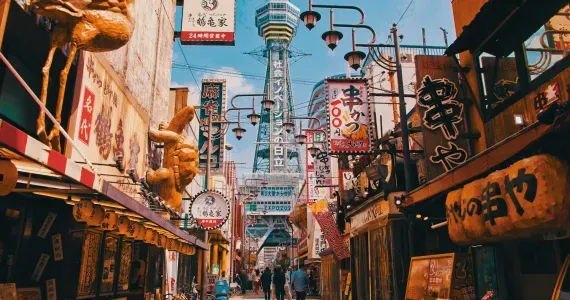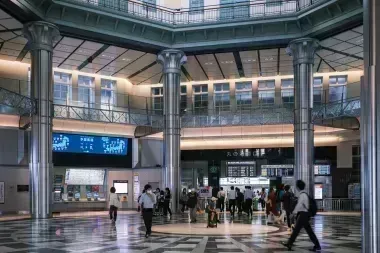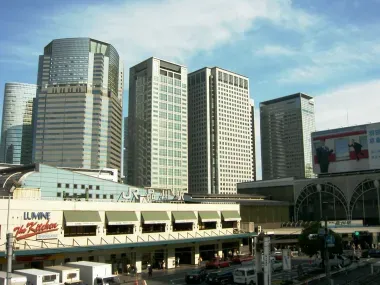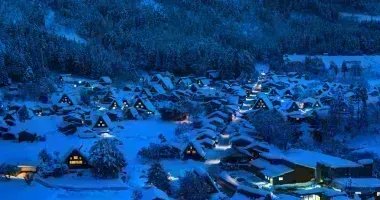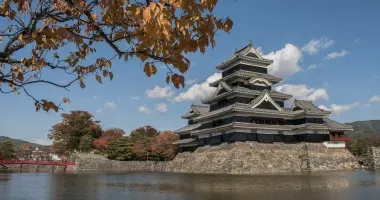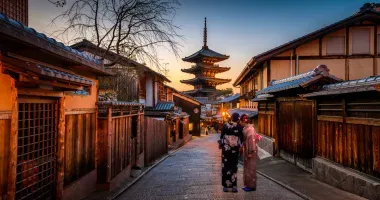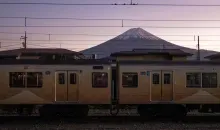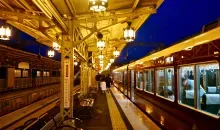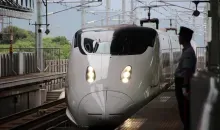How to get from Tokyo to Osaka
Two of Japan’s most bustling metropolitan areas, the two cities of Tokyo in Kanto and Osaka in Kansai, are often compared, and thus, a bit of a rivalry between each of the city’s residents exists. For visitors to Japan, experiencing the sites, sounds, and atmosphere of both is essential to seeing the charms that make each of these cities unique, and perhaps to seeing which one they end up preferring!
How to get from Tokyo to Osaka
Shin-Osaka Station
Going from one city to the other is quite easy via the Shinkansen bullet train. Specifically, the two cities are linked via the Tokaido Sanyo Shinkansen, and from Tokyo, travelers can depart from either Tokyo Station or Shinagawa Station within the city’s center, then later arrive at Shin-Osaka Station, which was originally built to service the country’s first run of Shinkansen bullet trains.
The route from Tokyo to Osaka spans 505 kilometers (313 miles) and takes around 2 hours and 30 minutes. Tickets start at 13,620 yen for unreserved seats, but the ride is fully covered by the Japan Rail Pass, depending on the Shinkansen bullet train being ridden. (Riding the Nozomi or Mizuho Shinkansen bullet train with the Japan Rail Pass from Tokyo to Osaka constitutes an additional fee of 4,960 yen.) Trains out from Tokyo to Osaka start departing at 6:00 AM, and the last train departs at 9:24 PM, typically arriving at Shin-Osaka Station at 11:45 PM.
Shinkansen bullet trains available on this itinerary:
| Nozomi Shinkansen Bullet Train | Mizuho Shinkansen Bullet Train | Hikari Shinkansen Bullet Train | Kodama Shinkansen Bullet Train |
*NOTE: All Shinkansen bullet trains on the Tokaido-Sanyo Line are accessible with the Japan Rail Pass; however, an additional fee of 4,960 yen is required to ride the Nozomi and Mizuho trains from Tokyo to Kyoto.
Reserve Shinkansen tickets from Tokyo to Osaka!
Reserving seats on the Shinkansen
Individual ticket holders and holders of Japan Rail Passes can book seats in advance of boarding on Shinkansen bullet trains. Since many Shinkansen bullet trains contain non-reserved cars with seats that are available on a first-come, first-served basis, reservations are not always necessary for these trains. Usually, these are car numbers 1-4.
However, there are some trains where all cars require a reservation. At the same time, we strongly advise all travelers to make every effort to purchase tickets with a reservation during peak travel periods in Japan, such as the spring and during the New Year's season. A reserved seat is an extra expense when buying a single ticket, although Japan Rail Pass holders are exempt from this fee.
Oversized baggage on the Shinkansen
There are several standards that must be fulfilled in order for passengers who have bulky baggage to board the bullet train. As mandated by Japan Railway, luggage over 160 cm in total length, width, and height must be checked into the special large baggage area at the rear of the train car. Owners of such luggage are also required to book seats close to this area. Please take note that no luggage over 250 cm in total size is permitted on the Shinkansen.
Baby carriages, musical instruments in cases, and sports equipment (bikes, snowboards, etc.)
Exploring Tokyo
The modern-day capital of Japan was once known as Edo prior to the Meiji Restoration. It is currently the largest city in the world in terms of population and has a rich and varied culture that is representative of that. With hustle and bustle in its more central destinations and more sleepy, relaxed neighborhoods scattered around, there is something for everyone in this metropolitan area.
Lovers of anime and Japanese pop culture will find a second home in Akihabara and Nakano. Those looking for a night out on the town will find constant entertainment in Roppongi. Trendy neighborhoods like Kichijoji and Shimokitazawa will give a peek into what the hip folk of Tokyo are into, and those wanting a day to treat themselves to luxury shopping and dining will undoubtedly need to visit Ginza and Higashi Azabu.
One of Tokyo’s biggest draws is its extensive public transportation network, which will allow travelers to navigate around the city with ease. This is especially for holders of the Japan Rail Pass, who will have unlimited access to the JR Lines within and departing from Tokyo. Tokyo Station, Shinagawa Station, and Ueno Station serve as Shinkansen Bullet Train stops.
The Shinkansen bullet train departs at Tokyo Station or Shinagawa Station, both of which are in the heart of Tokyo and are on the JR Yamanote Line, and travels to Osaka from Tokyo. Tokyo Station's surroundings are primarily commercial, with luxury, upscale department stores and shopping centers, fast food and fine dining establishments, as well as peaceful parks like the Imperial Palace Park and Hibiya Park. There is a vast network of other stores, eateries, and department stores located within the station.
Shinagawa Station is located in a part of Tokyo that is primarily focused on business, and the surrounding area has many reasonably priced fast-casual restaurants that are geared toward office workers. Nonetheless, there are other entertainment options for tourists and people waiting to board their departing Shinkansens, such as the Nikon Camera Museum and Maxell Aqua Park.
Exploring Osaka
Osaka, the most populated city in Kansai and the third most populated city in Japan, is well-known for its vibrant environment, savory street food, and eccentric residents. Often seen as a companion city (or rival city, depending on who you ask), Tokyo, visitors often venture to both when traveling to Japan and compare their experiences at the two, best done upon visiting each destination back to back with ease using the Shinkansen bullet train.
For many tourists, central Osaka’s bustling locales of Umeda, Namba, and Dotonbori are common places to visit, densely packed with varying storefronts and distinctly Japanese urban scenery. Often cited as the symbol of Osaka, Dotonbori’s running Glico Man overlooks the area’s central bridge and is a popular spot for taking photos. But to take a break from the crowds and fanfare, Honmachi is a quieter area that is still within the city’s center, meaning that you won’t need to travel far for a more relaxing environment.
As eccentric as Osaka is, it is by no means a lightweight destination in terms of culture and art. The city was home to the world’s expo in 1970, and for such, artist Taro Okamoto constructed the iconic “Tower of the Sun” (太陽の塔). The tower is preserved to this day and is located in Expo Park.
For history that goes even further back, the Mozu Tombs are a one-of-a-kind visit, a collection of burial tombs known as kofun that were constructed in the 5th century.These ancient burial grounds are located within Osaka’s metropolitan area and stand as a distinct historic site amongst the urban architecture. From the air, the burial grounds come in many shapes and forms, the larger ones resembling the shape of a key hole.
For those traveling to and from Osaka via Shinkansen, it is actually Shin-Osaka Station that will be the primary servicing station, the newer station constructed in 1964 to service the first run of Shinkansen bullet trains to operate in the country. Neaby, check out Kiyasuso Hanpo, famous for its sweet and syrupy mitarashi dango (chewy mochi that’s been toasted and glazed with a sweet sauce) with a unique rectangular shape.
Inside Shin-Osaka Station, Chikira House is a specialty shop dedicated to Nissin Chicken Ramen products. Pick up Osaka-exclusive souvenirs, savory snacks, and even a chicken-ramen-flavored soft-serve ice cream. A very unique delicacy that is sure to be a distinct memory in Osaka!

Shinkansen to Osaka
@Wikimedia
From the heart of Kanto to the heart of Kansai
Of course, visiting Tokyo and Osaka doesn’t mean you have to pick a side in the long-running rivalry, as both cities are home to a lively culture with something for everyone. From the food to the sites to the people, there are similarities and differences between the two cities that constitute a visit to each, and traversing between the two is effortless with the Shinkansen bullet train. Experiencing both cities provides insight into two of Japan’s most representative destinations and access to an array of different experiences that will be sure to become notable memories for your next trip out!

